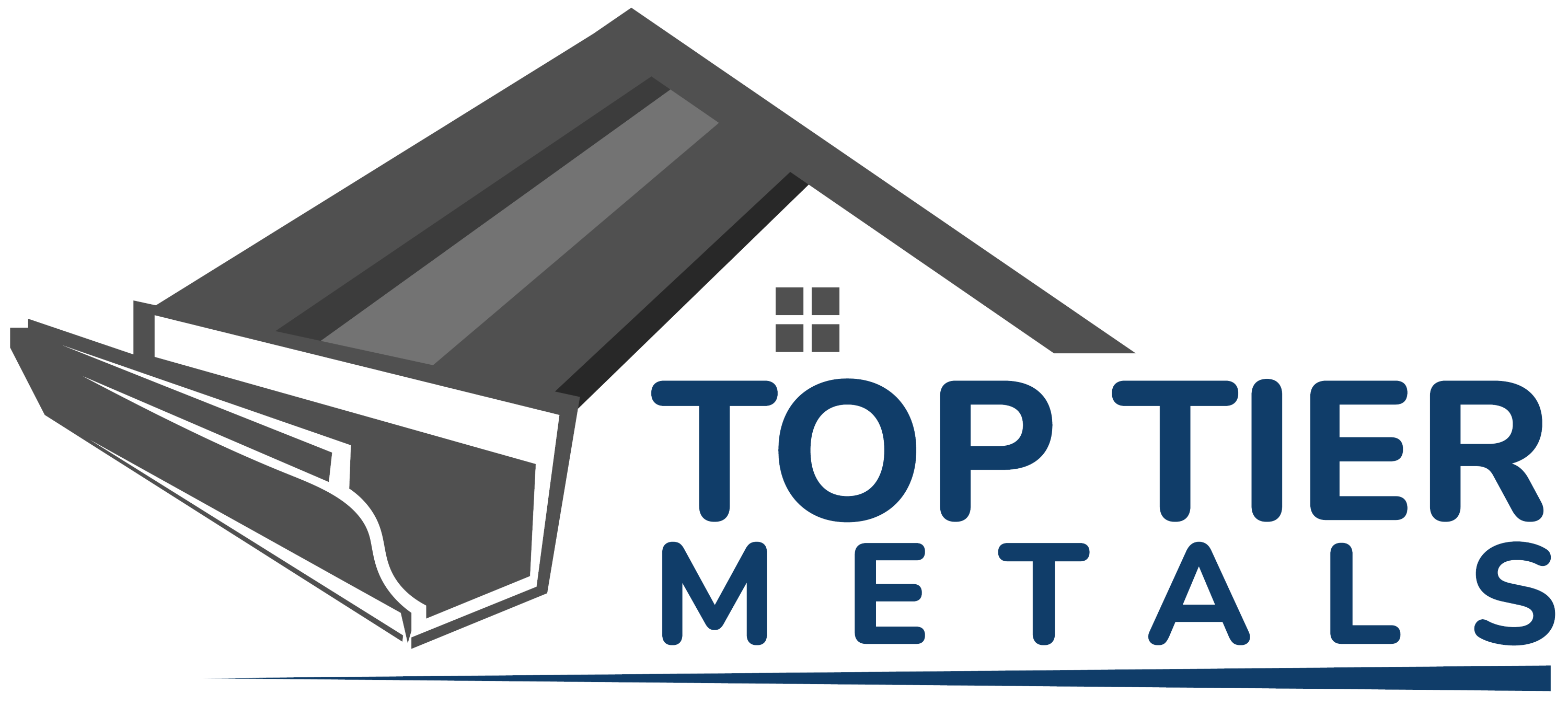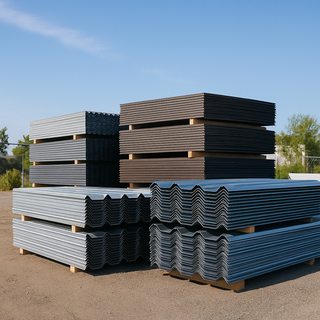When it comes to metal roofing, not all steel is created equal. The quality, durability, and corrosion resistance of your roof depend heavily on one critical factor — the grade of steel used. From Galvalume® to G-90 galvanized steel, understanding steel grades can help you make an informed decision that ensures long-lasting performance, value, and protection for your home.
In this in-depth guide, we’ll break down the most common steel grades, coatings, and classifications, explain how they affect roofing performance, and help you choose the best one for your environment and budget.
Why Steel Grade Matters for Roofing
The grade of steel determines its composition, strength, and resistance to corrosion. Roofing steel is typically rolled, coated, and painted to create panels or tiles capable of withstanding decades of exposure to sun, rain, hail, and temperature fluctuations.
Choosing the correct steel grade impacts:
-
Lifespan of the roof.
-
Resistance to rust and corrosion.
-
Strength and impact resistance.
-
Appearance and color retention.
-
Warranty coverage.
The wrong grade can lead to premature rusting, fading, or structural weakness — especially in coastal or high-moisture areas.
How Roofing Steel Is Made
Steel roofing typically starts as cold-rolled carbon steel, which is processed through several steps:
-
Cold Reduction: The steel is rolled into thin sheets for flexibility.
-
Annealing: It’s heated to restore ductility and reduce brittleness.
-
Coating: The steel is dipped or sprayed with protective layers (zinc or aluminum-zinc).
-
Painting: A high-performance paint system (like PVDF) is applied for color and UV protection.
The combination of the steel’s base composition and coating determines its final grade and classification.
Common Roofing Steel Grades and Coatings
There are two main coating systems used in roofing-grade steel: Galvanized and Galvalume®.
1. Galvanized Steel (G-Series)
Galvanized steel is coated with pure zinc to protect the steel beneath from corrosion. The zinc acts as a sacrificial layer — corroding first before the steel does.
The “G” number refers to the coating weight in ounces per square foot.
| Coating Grade | Description | Common Use |
|---|---|---|
| G30 | Thin zinc layer, low-cost | Indoor or temporary applications |
| G60 | Moderate coating | Siding, low-demand panels |
| G90 | Heavy-duty zinc coating | Residential and commercial roofing |
| G185 | Double-thick coating | High-humidity, agricultural, or coastal projects |
G90 is the most widely used standard for residential roofing, balancing corrosion protection with cost-efficiency.
2. Galvalume® Steel (AZ-Series)
Galvalume® is a proprietary coating of 55% aluminum, 43.5% zinc, and 1.5% silicon. This combination offers superior corrosion resistance compared to galvanized coatings.
The “AZ” number represents coating thickness — typically measured in grams per square meter or ounces per square foot.
| Coating Grade | Description | Common Use |
|---|---|---|
| AZ50 | Standard coating | Residential panels, interior projects |
| AZ55 | Thicker coating for exterior use | Roofing tiles and standing seam panels |
| AZ60 | Premium protection | Coastal and industrial environments |
Galvalume® typically lasts 2–4 times longer than galvanized steel in most environments, particularly in humid or coastal climates.
3. Stainless Steel
For extreme environments, stainless steel offers unmatched corrosion resistance due to its high chromium content (10–20%). It doesn’t rely on coatings for protection, though it’s significantly more expensive.
-
Ideal for marine environments, coastal roofs, or high-end architectural designs.
-
Available in multiple finishes including brushed, matte, or polished.
Downside: The cost can be 2–4 times higher than standard steel roofing.
Steel Gauge and Thickness
In roofing, “gauge” refers to the thickness of the steel sheet. Lower numbers indicate thicker steel and higher strength.
| Gauge | Approx. Thickness (in.) | Common Use |
|---|---|---|
| 22 Gauge | 0.0312" | Heavy-duty commercial roofing |
| 24 Gauge | 0.0250" | Premium residential and commercial |
| 26 Gauge | 0.0187" | Standard residential roofing |
| 29 Gauge | 0.0149" | Light-duty or budget panels |
For most homes, 26 or 24 gauge steel offers the ideal balance of strength, flexibility, and cost.
Paint Systems: The Final Protective Layer
After coating, most steel roofing is finished with a paint system that protects against UV rays and color fading. The two most common are:
1. PVDF (Polyvinylidene Fluoride) — “Kynar 500®”
-
Premium paint system used on high-end metal roofing.
-
Superior UV, fade, and chalk resistance.
-
Retains color for decades.
-
Best for hot, sunny, or coastal environments.
2. SMP (Silicone Modified Polyester)
-
More affordable alternative.
-
Good color retention but less durable in extreme UV exposure.
-
Ideal for moderate climates or shaded installations.
Comparing Galvalume® vs. Galvanized Steel
| Feature | Galvanized (G-Series) | Galvalume® (AZ-Series) |
|---|---|---|
| Coating Material | Zinc | Aluminum-Zinc Alloy |
| Corrosion Resistance | Good | Excellent |
| Appearance | Shiny, bright finish | Smooth, matte silver finish |
| Longevity | 20–40 years | 40–70 years |
| Ideal Use | Dry, inland areas | Coastal or humid regions |
✅ Verdict: Galvalume® outperforms galvanized steel in nearly every category except for price, making it the top choice for long-term roofing systems.
Environmental and Energy Benefits
-
Recyclability: Steel roofing is 100% recyclable and often contains 25–35% recycled content.
-
Cool Roof Performance: Reflective coatings reduce heat absorption by up to 25%, improving home efficiency.
-
Reduced Waste: Long lifespan means fewer replacements and less landfill waste compared to asphalt.
Choosing the Right Steel Grade for Your Home
Your local climate, roof style, and desired aesthetic determine which steel grade performs best.
| Environment | Recommended Steel Type | Ideal Coating |
|---|---|---|
| Dry, inland | Galvanized steel | G90 |
| Humid or coastal | Galvalume® steel | AZ55 or AZ60 |
| Industrial/polluted | Galvalume® steel | AZ60 with PVDF |
| Marine or saltwater proximity | Stainless steel | No coating needed |
Maintenance Tips for Steel Roof Longevity
-
Inspect annually for debris, especially around fasteners and flashings.
-
Clean gently using mild soap and water — avoid harsh chemicals.
-
Repaint or touch-up if finish wear is observed (after 25+ years).
-
Clear gutters and valleys to prevent standing water or corrosion.
-
Avoid walking on panels unnecessarily to prevent denting or scratches.
Common Steel Roofing Brands and Systems
-
Central States Manufacturing — Known for precision-coated metal panels.
-
DECRA Roofing Systems — Premium stone-coated steel tiles.
-
Westlake Royal Roofing (Unified Steel) — High-performance metal roofing solutions.
-
McElroy Metal — Wide range of gauges and paint systems for both residential and commercial use.
-
Metal Sales Manufacturing — National supplier with multiple Galvalume® options.
Final Thoughts
When investing in a metal roof, choosing the right steel grade and coating system is crucial for maximizing lifespan and minimizing maintenance.
-
For most homeowners, Galvalume® steel with an AZ55 coating and PVDF paint system offers the best balance of cost, durability, and aesthetics.
-
In coastal or humid regions, this combination can last 50+ years with virtually no corrosion.
-
For extreme environments or high-end architecture, stainless steel provides unmatched longevity.
By understanding the science behind steel grades, you can make an informed roofing decision that ensures your home stays protected — beautifully and efficiently — for decades to come.





